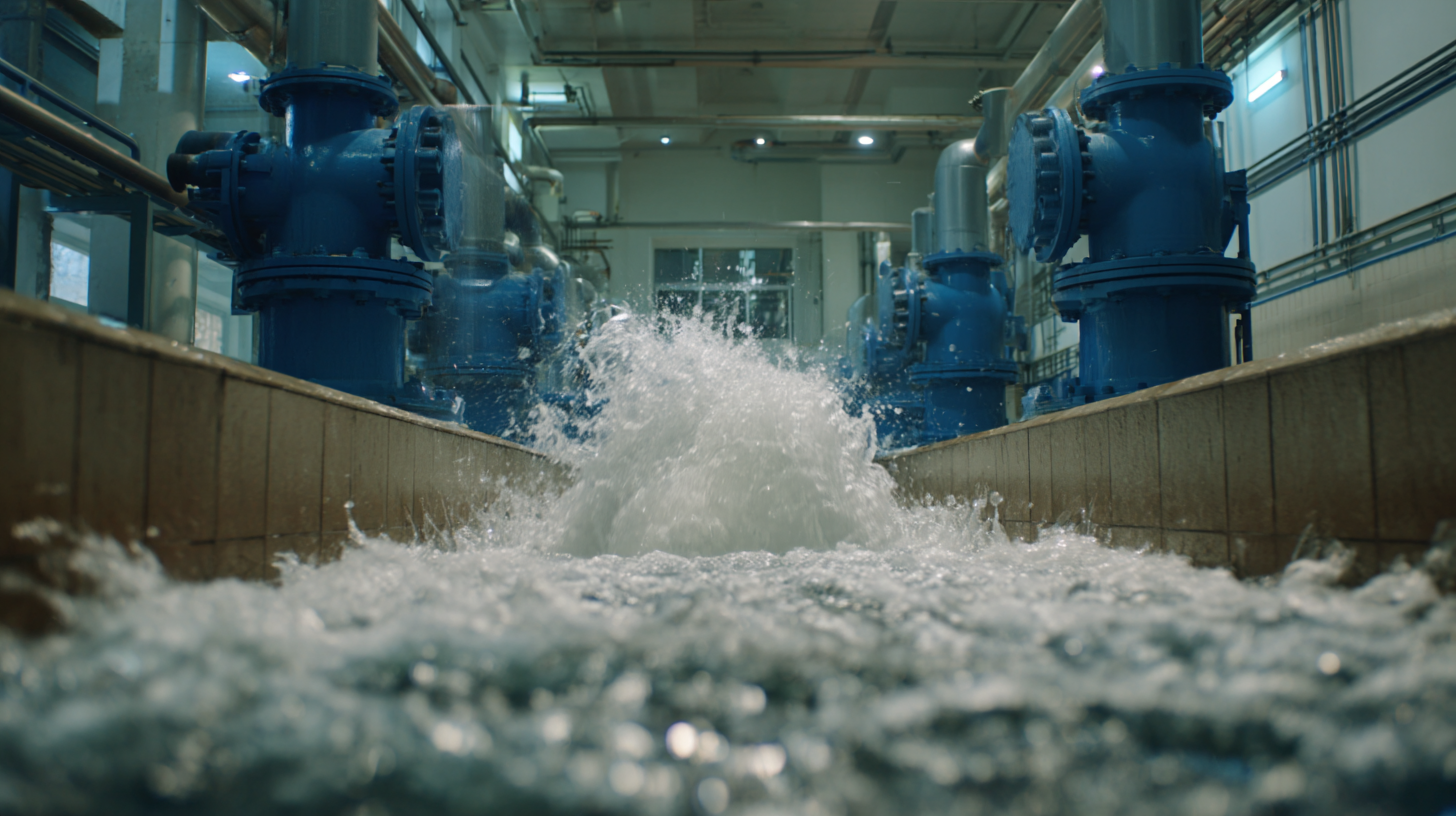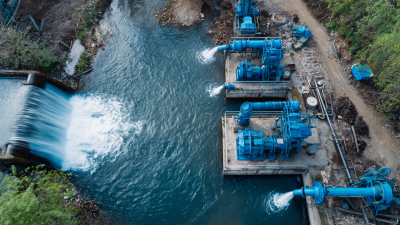
The landscape of water and pumps is undergoing a transformative shift, driven by groundbreaking innovations that promise to revolutionize fluid management. As the global demand for efficient and sustainable water systems intensifies, the integration of digital technologies into pump design and operation has become paramount. This convergence of digital solutions and traditional fluid dynamics is paving the way for more intelligent, responsive, and efficient water management systems.

From advanced sensors that monitor flow rates in real-time to predictive analytics that enhance maintenance protocols, the future of water and pumps is not just about moving fluids; it's about optimizing every aspect of their journey. As we explore the latest trends and innovations, it becomes clear that the path forward lies in embracing these advancements, ensuring that the vital resource of water is managed with unparalleled efficiency and sustainability.
Innovative pump technologies are playing a pivotal role in transforming water management systems across the globe. With growing concerns over water scarcity and the increasing demand for efficient fluid management, advancements in pump design and functionality are paving the way for more sustainable practices.
Smart pumps equipped with sensors and IoT technology enable real-time monitoring and control, allowing for optimized water distribution and reduced energy consumption.
Moreover, the integration of renewable energy sources such as solar and wind power into pump systems is revolutionizing the way water is managed, particularly in remote areas. These innovations not only enhance the operational efficiency of pumping stations but also contribute to a greener environment by minimizing carbon footprints. Advanced materials and maintenance-free pump technologies further extend the lifecycle of these systems, reducing downtime and operational costs while ensuring a reliable supply of water for agricultural, industrial, and municipal applications.

The integration of IoT solutions in fluid management is set to redefine the landscape of level sensor markets. The market for these sensors, which includes both contact and non-contact types, is categorized by advanced technologies such as ultrasonic, radar, and hydrostatic pressure sensing. By 2031, the chemical sensors market is expected to reach approximately $37.77 billion, growing at a compound annual growth rate (CAGR) of 6.04% from $25.05 billion in 2024. This growth is driven by increased demand for precise fluid monitoring and control across various industries, including water and wastewater management.
Furthermore, the pipeline valve market presents significant potential for innovation, especially with the rising demand for automation in operation types such as manual and automated control. Valves like ball and gate valves, along with materials ranging from stainless steel to alloy-based options, are crucial to ensuring reliable fluid management systems. The anticipated market growth underscores the importance of IoT-enabled monitoring, which not only enhances operational efficiency but also ensures compliance with safety and environmental regulations across sectors like oil and gas and water treatment. As these technologies advance, they pave the way for smarter, more efficient fluid management solutions.
The focus on sustainable practices in water management has never been more critical, especially as global water scarcity looms. Advanced pump designs are at the forefront of this revolution, enabling significant reductions in water waste. By utilizing cutting-edge technologies such as variable frequency drives and smart sensors, modern pumps can optimize their performance based on real-time demand. This not only enhances energy efficiency but also minimizes the risks of leaks and overflows, contributing to a more responsible use of this precious resource.
Furthermore, innovations like self-regulating pumps and advanced filtration systems promote better water conservation practices. These systems are designed to automatically adjust their operation depending on the conditions, such as changes in pressure or flow, ensuring that only the necessary amount of water is pumped for agricultural, industrial, or residential use. Through these innovations, the industry is paving the way for sustainable fluid management solutions that not only protect our water resources but also set a precedent for future technologies.

The integration of artificial intelligence (AI) in pump systems is transforming fluid management by enhancing performance and efficiency. According to a report by ResearchAndMarkets, the global AI in the pump market is expected to grow at a CAGR of 20.8% from 2023 to 2030. AI-powered algorithms analyze data in real-time, allowing for predictive maintenance and dynamic adjustment of pump operations based on varying conditions. This capability not only minimizes downtime but also extends the lifespan of the equipment.
In addition, a study by the American Society of Mechanical Engineers indicates that AI can improve pump efficiency by up to 30% when properly implemented. By utilizing sensor data, AI can identify anomalies and inefficiencies that human operators might overlook, making it possible to optimize flow rates and reduce energy consumption. The result is a more sustainable operation, with significant cost savings for industries that rely heavily on fluid management, such as oil and gas, water treatment, and manufacturing. As AI technology continues to evolve, its role in pump performance will become increasingly vital, setting new standards for operational excellence.
The advent of smart water grids is transforming the management of water resources, particularly in urban environments facing challenges like leakages and pressure management. Recent initiatives in cities like Mumbai illustrate the impact of smart water meters that employ AI and IoT technologies to provide real-time insights. These advancements aim to optimize water distribution and significantly reduce wastage due to leaks, thereby ensuring that communities receive fair and consistent water supplies. According to a report from the International Water Association, it is estimated that advanced metering infrastructure can reduce non-revenue water losses by up to 30%, showcasing the critical role of smart solutions in modern water management.
In addition, the deployment of IoT solutions plays a pivotal role in enhancing efficiency within water distribution networks. By monitoring pressure and flow in real-time, these technologies not only improve operational efficiency but also enable proactive maintenance, which according to a recent study, can save municipalities up to $1 million annually in reduced repair costs. Furthermore, the ability to collect and analyze data facilitates better resource allocation, ultimately supporting sustainable development goals. As cities around the world adopt these innovations, the landscape of water management is set to improve dramatically, reflecting a significant shift toward more intelligent and responsive systems.
This chart illustrates the projected water demand in million cubic meters, alongside the expected water supply efficiency percentage from 2021 to 2025. The innovation in smart water grids is expected to enhance both the efficiency of distribution and the management of fluid resources, leading to improved sustainability in water usage.






We are here to help you with all your queries and concerns, just write to us using the below form and we will get back to you as soon as we can.